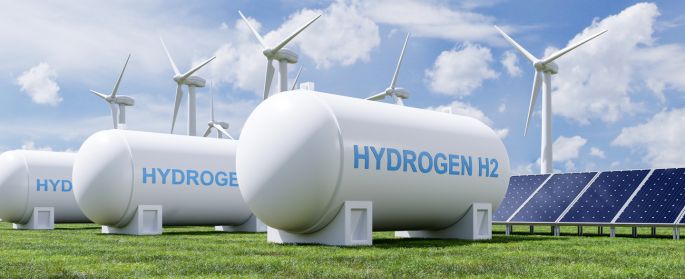- The decarbonization of the planet is one of the global objectives for the year 2050
- Green hydrogen can be an excellent substitute for fossil fuels
Hydrogen is the most abundant chemical element on the planet. In fact, it is present in the 75% of matter and is light, storable and non-polluting by itself.
However, we never find it alone, but in the company of other chemical elements such as oxygen forming water, or carbon forming organic compounds.
For this reason, the premise is to generate hydrogen in a sustainable way, with which we will obtain green hydrogen.
Obtaining method
Green hydrogen is obtained by electrolysis of water. Specifically, it uses electric direct current to separate hydrogen from oxygen in water, to break water molecules into oxygen and hydrogen.
If the electricity for electrolysis comes from renewable sources, such as wind or solar, we produce energy without generating polluting emissions, achieving sustainable hydrogen.
Some uses of green hydrogen
Here are some possible applications:
- Electricity generator and drinking water
Electricity and drinking water is achieved by reacting hydrogen and oxygen in a fuel cell.
- Energy storage
Compressed hydrogen tanks store energy for long periods of time and are easier to handle than other batteries.
- Transport and mobility
Hydrogen can be a good alternative in sectors that are difficult to decarbonise, such as aviation or maritime transport. To this end, the European Union has promoted various projects for its technological development.
Advantages and disadvantages
The positive part is that green hydrogen is sustainable, 100% storable, versatile and transportable.
The disadvantages include the higher production cost, the need for high levels of security and the need for large investments.
The European Union is promoting initiatives throughout the hydrogen value chain that, together with cheaper renewable energy, could make green hydrogen profitable by 2030.

